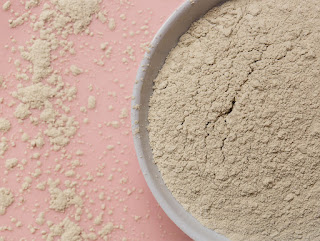Know about Dodecylbenzene Sulfonate.
Sodium Dodecylbenzene Sulfonate is a white to light yellow sand-like solid. It is used as a detergent, in cleaning products, and in pesticides.
Which is the catalyst used to prepare dodecyl benzene?
Abstract: Fe2O3 and Fe2O3/attapulgite(ATP)
catalyst was used for Fenton reaction to degrade an anion surfactant,
sodium dodecyl benzene sulfonate(SDBS),in an aqueous solution.
What is the other name of dodecylbenzene?
Dodecylbenzene
|
Names |
|
|
Preferred IUPAC name Dodecylbenzene |
|
|
Other names 1-Phenyldodecane,
Phenyldodecane, n-Dodecylbenzene, Laurylbenzene |
|
|
Identifiers |
|
|
CAS
Number |
29986-57-0
123-01-3 |
Is sodium dodecyl benzene sulfonate a disinfectant?
Sulfates are a multi-purpose disinfectant. They consist of
potassium peroxymonosulfate, sodium dodecylbenzenesulfonate, sulfamic acid and
inorganic buffers. They are typically used for cleaning up hazardous spills,
disinfecting surfaces and rinsing equipment.
How is sodium dodecyl benzene sulfonate made?
TEA-DDBS is made by reacting dodecylbenzenesulfonate with
sulfuric acid (Oleum process) and air/SO, to produce dodecylbenzene
sulfonic acid (CTFA, 1991 b). The dodecylbenzene sulfonic acid is then
neutralized with triethanolamine.
Is dodecylbenzene sulfonic acid safe?
HAZARD SUMMARY
* Dodecylbenzene Sulfonic Acid can affect you when breathed in. * Contact
can irritate and burn the skin and eyes. * Repeated skin contact may
cause dryness, itching and rash. * Breathing Dodecylbenzene Sulfonic Acid can
irritate the nose and throat.
What is tea Dodecylbenzenesulfonate?
surfactant - cleansing agent, cleansing, foaming, and surfactant.
TEA-Dodecylbenzenesulfonate is a substituted aromatic compound.
BENZENESULFONIC ACID, DODECYL, COMPD. WITH 2,2 ,2 NITRILOTRIS[ETHANOL] (1:1),
BENZENESULFONIC ACID, DODECYL-, COMPD.
Is sodium dodecylbenzenesulfonate hazardous?
HAZARD SUMMARY
* Sodium Dodecylbenzene Sulfonate can affect you when breathed in.
* Contact can irritate the skin and eyes with possible eye damage. * Breathing
Sodium Dodecylbenzene Sulfonate can irritate the nose, throat and lungs causing
coughing, wheezing and/or shortness of breath.
How does sodium dodecylbenzenesulfonate work?
As a kind of anionic surfactant, sodium dodecyl benzene sulfonate has
good surface activity and strong hydrophilicity. And it effectively reduces
the tension of oil and water surface to emulsification
What does sodium dodecylbenzenesulfonate do?
Sodium dodecylbenzene sulfonate is a cleaning agent, or
"surfactant," that is one of a group of ingredients commonly used in
bath products, cleansing products, shampoos and hair conditioners. We use it in
our products to remove dirt and deposits.
What is the density of sodium dodecylbenzene sulfonate?
0.18 g/ml
Solid
|
Items |
Normal Grade |
Premium Grade |
|
Density |
≥0.18 g/ml |
|
|
Water |
≤3% |
|
|
PH |
8.5-11.5 |
8.0-10.0 |
|
Solubility |
/ |
Completely
dissolved in water |
How do you pronounce sodium dodecylbenzene sulfonate?
Sodium Dodecylbenzene Sulfonate Pronunciation. Sodi·um
Do·de·cyl·ben·zene Sul·fonate.
Is sodium dodecylbenzene sulfonate organic or inorganic?
Sodium dodecylbenzenesulfonate belongs to the class of organic
compounds known as benzenesulfonic acids and derivatives. These are
organic compounds containing a sulfonic acid or a derivative thereof that is
linked to a benzene ring.
What is the chemical formula of sodium dodecylbenzene sulfonate?
Sodium
Dodecylbenzenesulfonate Properties (Theoretical)
|
Compound Formula |
C18H29NaO3S |
|
Molecular
Weight |
348.48 |
|
Appearance |
Off-white
to light yellow powder or flakes |
|
Melting
Point |
204-207
°C |
|
Boiling
Point |
N/A |
Is sodium dodecylbenzene sulfonate a cationic detergent?
Sodium dodecyl benzene sulphonate used in tooth paste is a cationic
detergent.
Is sodium dodecylbenzenesulfonate ionic or covalent?
Sodium dodecylbenzenesulfonate is an ionic surfactant.
Sodium
o-dodecylbenzenesulfonate
|
PubChem CID |
23662403 |
|
Chemical
Safety |
Laboratory
Chemical Safety Summary (LCSS) Datasheet |
|
Molecular
Formula |
C18H29NaO3S |
|
Synonyms |
Sodium
o-dodecylbenzenesulfonate 15163-46-9 2-Dodecylbenzenesulfonic acid, sodium
salt SDBS sodium dodecyl benzene sulfonate More... |
|
Molecular
Weight |
348.5 |
What is the other name of dodecylbenzene?
Dodecylbenzene
|
Names |
|
|
Preferred IUPAC name Dodecylbenzene |
|
|
Other names 1-Phenyldodecane,
Phenyldodecane, n-Dodecylbenzene, Laurylbenzene |
|
|
Identifiers |
|
|
CAS
Number |
29986-57-0
123-01-3 |
How is sodium dodecyl benzene sulfonate made?
TEA-DDBS is made by reacting dodecylbenzenesulfonate with
sulfuric acid (Oleum process) and air/SO, to produce dodecylbenzene
sulfonic acid (CTFA, 1991 b). The dodecylbenzene sulfonic acid is then
neutralized with triethanolamine.
Is sodium dodecylbenzenesulfonate toxic?
Sodium dodecylbenzenesulfonate is soluble in water and partially soluble
in alcohol, with dermal absorption dependent on pH. Dodecylbenzenesulfonate
salts are not toxic in single-dose oral and dermal animal
tests, and no systemic toxicities were observed in repeat-dose dermal animal
studies.
Is Dodecylbenzenesulfonate safe in sunscreen?
The CIR Expert Panel evaluated the scientific data and concluded that
these ingredients were safe as ingredients in cosmetics and personal
care products in the present practices of use when formulated to be
non-irritating.
Is Tea Dodecylbenzenesulfonate good for hair?
In cosmetics and personal care products, these ingredients function as
surfactants in bath products, cleansing products, shampoos and hair
conditioners, improving their ability to wet the skin and hair. ... Linear
alkylbenzenesulfonate surfactants are soluble and effective at low
concentrations.




















